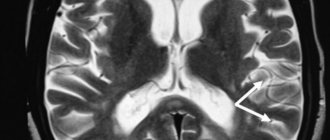Panic is a reaction of the body in response to stress that is threatening in nature. We all sometimes experience this feeling when we find ourselves in dangerous or hopeless situations, as it seems to us. But there is a category of people who experience causeless panic in a state of absolute peace and relaxation. Such anxious episodes represent a specific neurotic disorder called panic disorder.
What is it characterized by?
Panic disorder is recurrent episodes of panic attacks. It affects about 3% of the population, and this is three times the incidence of endogenous disorders such as schizophrenia or manic-depressive disorder. The disease is more common in women than men and develops between the ages of 20 and 60 years.
The frequency of panic attacks ranges from several per day to several per month. It is possible that their frequency is reduced to a couple of attacks per year. Its duration is 5–30 minutes, reaching an average of 10 minutes.
To make a diagnosis of panic disorder, several points must be present:
- absence of a specific, provoking situation. The attack occurs suddenly, in conditions familiar to a person;
- attacks of unreasonable anxiety are repeated several times a month;
- exacerbation is accompanied by vegetative symptoms, disorientation in space and in one’s personality;
- absence of other mental illness;
- lack of effect of a psychotic substance - alcohol, drugs;
- there is a fear of dying or going crazy.
But the main conditions for combining isolated attacks into a disorder are the fearful expectation of a repeat attack and the formation of protective behavior.
The causes of panic disorder have not been fully established. It is assumed that an imbalance of neurotransmitters in the brain may contribute to its appearance. For example, excess amounts of adrenaline, norepinephrine and a lack of serotonin increase the likelihood of developing anxiety and feelings of fear.
On the other hand, hyperexcitability of the amygdala in the brain may contribute to unreasonable panic attacks. Any information entering our brain is assessed as dangerous or safe. If any information has been recorded as threatening, a signal about this is transmitted to the amygdala. In response, it causes excitation of physiological reactions of the body: the release of adrenaline, changes in breathing, as well as behavioral characteristics. The person enters a state of hyperarousal and prepares for defensive behavior.
If the amygdala is overexcited, then such reactions are doubly intensified; they occur chaotically, even when there are no adequate reasons.
Contributing to a panic attack:
- heredity;
- childhood violence;
- bad habits - they deplete the nervous system, which reduces resistance to stress;
- previous stress;
- hormonal changes - pregnancy, childbirth, puberty;
- a sedentary lifestyle – it provokes a concentration of tension, mental and physical. In turn, sport, on the contrary, helps relieve stress and feeds with positive emotions;
- lack of sleep – the absence or lack of sleep stimulates the release of stress hormones, which trigger the development of the disorder.
It happens that anxiety attacks develop against a background of positive emotions. So, a girl started having panic attacks after her boyfriend proposed to her. Moreover, when she called him and the guy came running to her, she was “let go.”
The man began to experience seizures after being promoted at work. It involved moving to another city. And the guy didn’t know how to discuss this with his parents, relatives and his girlfriend. Such torment caused him an imbalance with himself, which was expressed in such acute experiences.
What does a panic attack mean and what are its symptoms?
The classic definition says that a panic attack is a spontaneous attack accompanied by anxiety. Most often, panic attacks appear after frequent stressful conditions. We must understand that a state of panic is common to people, if there are reasons, but a panic attack is characterized by suddenness. A person experiences fear, incomprehensible anxiety, panic, horror for no reason. Biologically, a large amount of adrenaline enters the blood, and the attack lasts from one minute to forty.
Free consultation right now!
Online consultation with a specialist on your issue!
License number: LO-77-01-019036
How do you know if you or a loved one may be having a panic attack? Let's look at the main symptoms of this disease.
Worsening panic disorder
A manifestation of panic disorder is a panic attack that overtakes the patient suddenly, without a threatening situation.
It has a physiological basis, so the attack is accompanied not only by emotional symptoms, but also by somatic ones.
Somatic signs manifest themselves as:
- tachycardia;
- difficulty breathing, asthma attacks;
- chest pain;
- increased sweating;
- nausea;
- chills, trembling throughout the body;
- feeling of heat throughout the body;
- dizziness;
- numbness of hands and feet;
- hearing and vision impairment.
Example : suddenly there was a fear of being alone in the country at night. From any rustle it pierces right through. Your heart begins to flutter and your palms begin to sweat. I'm hiding under the blanket and can't take a breath. I don’t know how long this lasts, maybe 15 minutes. At such moments, time seems to stop.
The trigger for the appearance of vegetative symptoms is the release of adrenaline into the blood. It constricts blood vessels, causing a surge in blood pressure, increased heart rate and breathing.
Rapid breathing causes a decrease in the concentration of carbon dioxide in the blood. Its acid balance is disrupted, which causes dizziness and a feeling of numbness. The man thinks he is going to faint. But this will not happen, if only because of high blood pressure. If fainting does occur, this indicates the presence of a specific somatic disease. In this case, a thorough examination is necessary.
An increased heart rate causes shortness of breath. Hence the feeling of lack of air, the feeling that a person is suffocating. This, in turn, further exacerbates anxiety and fear, which again triggers the release of adrenaline, and the cycle repeats. It turns out to be a vicious circle.
Mechanisms of panic symptoms
At the present stage, there are many hypotheses about the mechanisms of panic attacks, but they all boil down to disruptions in the processes underlying the reaction to stress.
Theories for panic cases:
- genetic theory;
Based on the idea that hereditary factors play a role in the risk of panic attack symptoms. The genes D4S413 and D9S271 are responsible for this.
- receptor theory;
The presence of a certain variant of the serotonin transporter protein (5HT LPR) leads to vulnerability to stress and correlates with the volume of brain gray matter in the amygdala and anterior cingulate gyrus;
- theory of human personality characteristics;
Symptoms of panic occur more often in people who have the following personality traits:
- Hypochondriacity;
- Demonstrativeness;
- I crave recognition;
- Great need to attract attention.
- psychoanalytic theory;
Its founder was Sigmund Freud. A person has natural needs for sex, freedom, aggression, if something affects his interests. Suppression of desires and interests under the pressure of family and social taboos leads to tension and internal conflict, which can develop into a panic attack. If strong experiences occur frequently, then a person may experience fear and a feeling of helplessness, which also provokes symptoms of panic.
- cognitive theory;
It consists of an incorrect interpretation of bodily sensations. Negative thinking contributes to incorrect internal experience, increased fear, which does not correspond to real dangers;
- social theory;
Modern life in a metropolis, pressure, stress, the need to conform to some status cause symptoms of panic not only in adults, but also in children and adolescents. Passing an exam, performing in competitions, fear of punishment, sexual violence cause symptoms of panic attacks;
- behavioral theory;
According to it, any external threatening event can take hold reflexively. For example, seeing a traffic accident causes your heart rate to increase and anxiety to arise. A repeated similar situation can again create an attack of anxiety and an acceleration of the pulse. In the future, a panic attack occurs without external causes;
- catecholamine theory;
Depending on the type of stress, the human body reacts with the release of adrenaline, a substance secreted by the adrenal cortex. It increases heart rate, increases blood pressure, and causes anxiety and fear.
Behavioral disorders
The person experiences symptoms of derealization and depersonalization. He doesn't understand where he is or who he is. It is accompanied by a pronounced feeling of fear. He often expresses thoughts that he is about to faint, go crazy, have a heart attack, or even die.
It seems to the patient that this horror will never end, and a few attacking minutes become a real hell for a person. He becomes agitated, runs around, fusses aimlessly. He begins to take all kinds of medications that come to hand. When leaving the state, the panicker feels exhausted, exhausted, and exhausted.
The first attack is usually the most intense. What frightens a person even more is that he does not understand what is happening to him, why this horror overtook him. Memories of the first attack are firmly ingrained in the memory, and the patient always remembers them.
A series of attacks provokes the emergence of protective behavior. That is, having experienced panic horror in a certain place or situation, a person avoids this place or the repetition of provoking conditions. If an attack catches an alarmist on a bus, he will tend to choose another vehicle or walk on foot.
Panic disorder is often accompanied by agoraphobia – the fear of leaving one’s home. Patients are completely withdrawn from the outside world and do not leave the house even to go to the store. The very thought of leaving my shelter causes a series of anxious thoughts: what if a brick falls on me from the roof, an angry dog attacks me, etc. If at the same time a person tries to go outside, he is instantly seized by paralyzing fear, his heart seems to stop, and he feels as if shackles are being put on his legs.
Why do violations occur?
COVID-19, like any other virus, affects the functioning of many body systems and affects not only the respiratory tract and lungs, but also the central nervous system. This is called neurotropism - the ability of an infection to infect cells of this system. Moreover, researchers believe that the virus multiplies inside the nerve cells of the brain.
Autopsy results show that coronavirus leads to inflammation of brain tissue. And neuroimaging techniques that show the structure and dysfunction of the brain reveal microstrokes and leukoencephalopathy, a condition that leads to demyelination when the covering of nerve cell processes is destroyed.
These organic damages lead to the person developing mental and neurological disorders, which are complications.
Anxiety Disorders Rating Scale
There are currently several tests available to determine the presence and severity of panic disorder. For example, the Sheehan scale, which includes 35 questions. It describes in detail the symptoms of the disease, physiological and psychological, and assumes unambiguous answers to the questions: yes or no.
The Cato test consists of 2 parts. The first small test, consisting of 4 questions, reveals the very presence of a panic attack in a person. If it is confirmed, then the person proceeds to perform the second part of the test. It determines the severity of the disorder.
But the most common and relevant today is the William Zang scale - ZARS . It was developed by the private Duke University in the USA, and named after its developer. It is very easy to use, translated into several languages and available on many Internet resources. The scale contains 20 questions with 4 possible answers: sometimes, rarely, often, very often. 15 questions assess the autonomic symptoms of the disorder, 5 – emotional ones.
After passing the test, the results are evaluated. There are 4 options possible.
- Norm.
- Mild degree of disorder. It is characterized by minor changes in the patient’s lifestyle. Naturally, attacks occur periodically, but they have little effect on the general emotional state. A person tries to avoid provocative places and situations so as not to provoke an attack.
- Average degree. A person's lifestyle is susceptible to some changes under the influence of the disorder. If he has to go through a situation that can cause an attack (for example, a public speech), then for a couple of months he is tormented by anxious thoughts about it. But, having survived it, he returns to his usual existence.
- Severe degree. Attacks occur quite often, and the patient’s entire life depends on them. He constantly replays their course and everything connected with them in his head. At this stage, all kinds of phobias very often develop, the person is isolated from the outside world. Flashbacks are typical, when patients visually and emotionally return themselves to the attack that happened. This fuels their fear even more.
Tests to evaluate panic disorder become part of its diagnosis.
In addition, a person needs to consult a neurologist and psychiatrist. He is also necessarily sent for examination to specialized specialists: a cardiologist, a gastroenterologist, a therapist. A list of laboratory and instrumental examinations is prescribed. All this is necessary in order to refute the presence of a somatic disease in the patient, because the symptoms of the disorder are disguised as many of them. The psychiatrist excludes mental disorders that are also accompanied by similar affective symptoms: neuroses, depression, phobias. An examination by a narcologist may be required if there is a suspicion that a person is developing an addiction.
What to do during panic attacks
It is important to provide proper assistance for this condition. If you understand that you are susceptible to panic attacks, or there is such a person among your friends, then you should know how to act when a panic attack occurs.
First aid for a panic attack
If you observe symptoms in a loved one that are similar to what we have, or the person himself knows when this condition begins and asks for help, it is necessary to provide assistance. Take the person outside so they have access to oxygen. If this is not possible, open the windows and fill the room with fresh air. Support the person: talk, ask about his well-being, it is important to speak in a calm, soft and measured voice. A tactile sign of attention is also important: hug the person or take his hand.
If you yourself are prone to attacks, then you need to know both self-help methods and measures to prevent attacks.
Preventing panic attacks
If you realize that you are having panic attacks, you should make a list of actions that will help you regain a sense of calm.
Switch your attention. You understand what causes a panic attack, learn to switch and not think about the event that caused it. To do this, learn to control your condition.
Concentrate on some subject. Select any object or its detail in the environment. Carefully study the selected object, try to notice all the details that it consists of. Focusing on details will help restore clarity of thinking.
Treatment of panic disorder
The condition requires complex treatment, including medication and psychotherapy.
Taking medications is divided into 3 stages:
- relieving – elimination of the main symptoms;
- continued – for state stability;
- supportive – preventing recurrent attacks.
Medicines used:
- tranquilizers. They help to quickly relieve anxiety symptoms, showing an effect literally a couple of minutes after use;
- antidepressants (AD) from the SSRI group, but their effect appears only after a few months;
- atypical antipsychotics.
Maintenance therapy is carried out with a course of blood pressure for 6–12 months at the dose at which a positive result was obtained. Then the dose is gradually reduced. Tranquilizers are prescribed in short courses, up to 2 weeks.
Of the methods of psychotherapy, cognitive-behavioral is considered the most effective. It helps to convey to the patient the cause of his disorder and the nature of the symptoms, get rid of incorrect beliefs about his condition and learn to stop the attack on his own.
One of the methods of this type of therapy is exposure - recreating conditions of anxiety and fear for the patient. He tries to deal with them in constructive ways, without resorting to protective behavior.
Psychoanalysis, which believes that the cause of panic disorders lies in psychological conflicts repressed from consciousness into the subconscious, helps a person realize these conflicts and resolve them. One of the techniques is stopping thoughts.
They use any form of psychotherapeutic treatment: individual, group, family.
What happens if PA is not treated?
Each subsequent attack is accompanied by more acute sensations. A person may develop a new phobia - a strong fear of repetition of paroxysms; he continues to live in constant tension, expecting the situation to worsen. Regardless of the intensity of the physiological symptoms, this disorder is not fatal. Treatment of panic attacks is necessary to prevent the development of phobias, increased anxiety and nervousness.
The patient begins to radically change his life and adapt to his condition. He avoids places with large crowds of people, supermarkets, and stops using any public transport. Gradually, such a person isolates himself from society, prefers not to engage in professional activities, and spends all his time indoors. He stops communicating on confidential topics with his loved ones, and there is a risk of developing serious mental complications. Patients with panic attacks often suffer from neurasthenia, neuroses, sleep disturbances, depression, and asthenia. The nervous system is exhausted, the person tries to relieve the symptoms with self-selected medications.
Regularly recurring attacks lead to loss of appetite and disruption of the functions of important organs, in particular the gastrointestinal tract. Conscious refusal of food leads to physical exhaustion. In this case, treatment of dystrophy is often required; this process is lengthy and is not always completed successfully. It all depends on the condition of the body, the presence of internal reserves to fight the disease.
Self-help methods
At the height of the attack, when a person finds himself alone with his fear, he can use techniques to reduce its intensity.
- Distraction maneuvers. There are many ways to shift your attention away from worrying symptoms. You can count trees or any other objects, pinch yourself, listen to music, take a contrast shower, or do an everyday procedure (wash the dishes).
- Breath. To normalize the ratio of carbon dioxide and oxygen in the blood, breathing techniques are used:
- On the count of 1, 2, 3, take a deep breath, 4, 5 - hold your breath. 6–10 – deep exhale. Inhale through the nose, exhale through the mouth. Repeat 10 times;
- Take the bag and secure it tightly around your nose and mouth. Take deep breaths and exhales. If you don't have a bag at hand, use folded palms.
- Alternate tension and relaxation of body parts. Clench and unclench your fists, purse your lips into a tube, and then relax them, smile sharply and pull your lips back together.
In addition, you can use aromatic oils, herbal teas, favorite toys, and hand exercisers.
Panic disorder is based on a sudden and uncontrollable feeling of fear. He expresses himself through physical sensations and emotions. A person must understand that the reason for his condition lies not in physical illness, but in his wrong attitudes. Having realized them and undergoing the necessary therapy, he will be able to return to normal life without anxiety and panic.
Classification of attacks
Modern psychotherapy identifies three main categories of panic attacks:
- Spontaneous attacks. They are characterized by unexpected development and arise in a situation in which the patient feels comfortable. The spontaneous attack usually occurs first, then most patients attribute symptoms to specific places, situations or circumstances.
- Situational attacks. They arise in a certain situation or when waiting for a long time for this situation.
- Conditional-situational attacks. They are provoked by factors of a biological nature: drinking alcohol, coffee, hormonal changes. However, this connection is rather arbitrary and difficult to trace. Often a panic attack that occurs under the influence of a chemical stimulus later turns into a situational one.
- Chemically provoked attacks. Separately, panic attacks are distinguished that first occurred under the influence of psychoactive (narcotic) substances - ecstasy, LSD, “speed”, “spice”, cannabis (marijuana), psilobiscins (“narcotic mushrooms”). As a rule, such a panic attack is atypical (it contains vivid experiences of depersonalization with fear of losing control over oneself and a feeling of change and loss of one’s own personality), and concomitant autonomic disorders can be either very pronounced or not expressed at all. Often, after such a panic attack, even once suffered, a persistent fear for one’s health develops, so pronounced that daily functioning is markedly and persistently reduced - so much so that the person is practically unable to work.
It is important to understand the cause for treatment to be successful.











